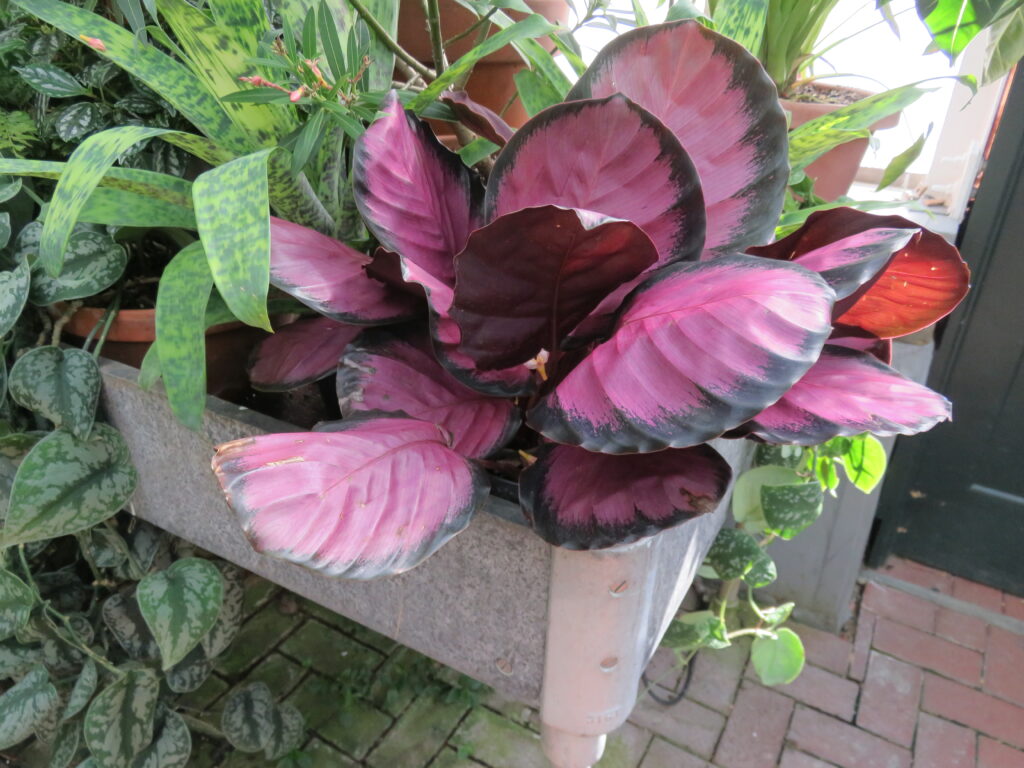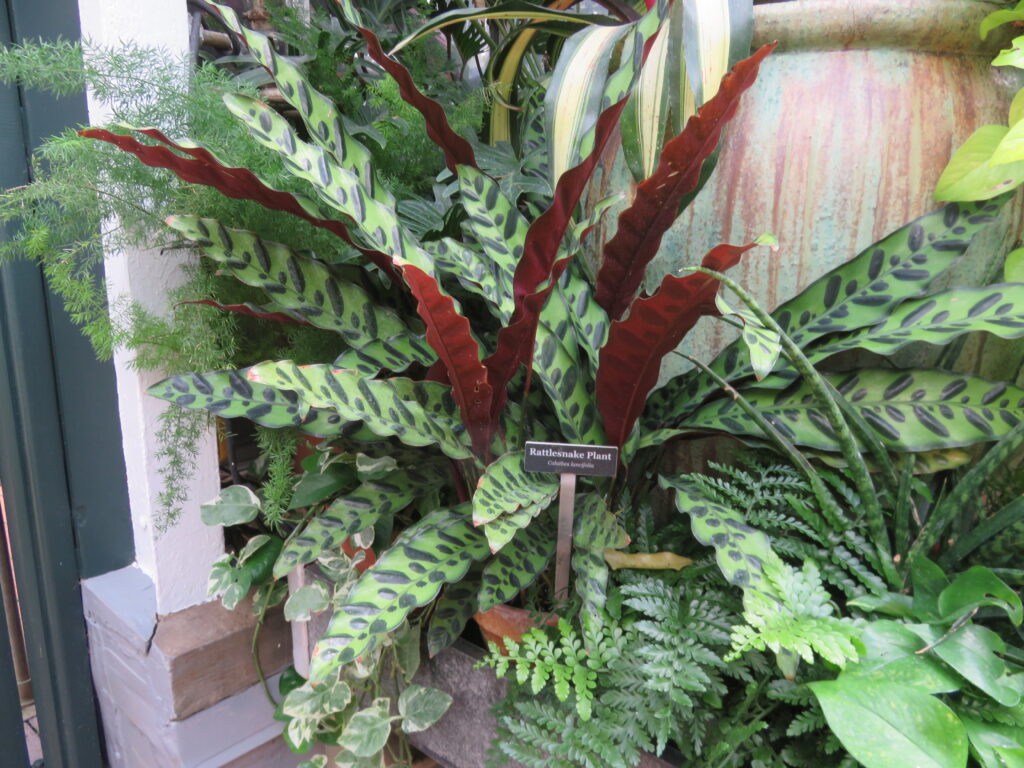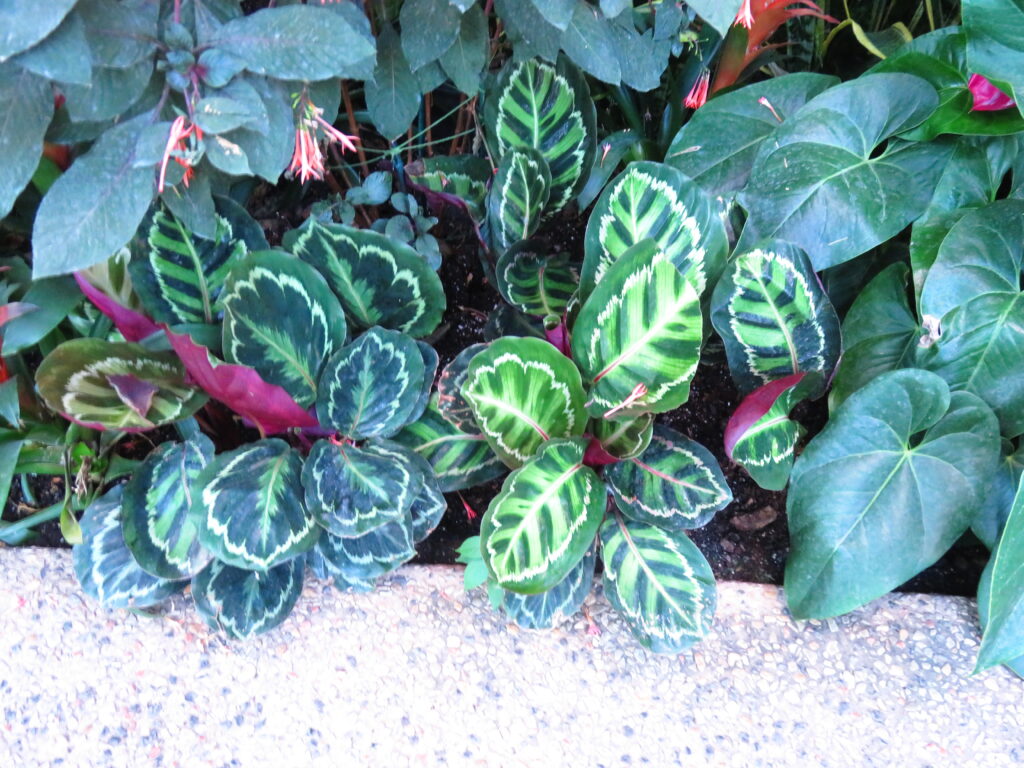Calatheas, also called Peacock plants, are among the most beautiful of foliage house plants, but their care can be challenging. Plants prefer low to medium bright spot in your home and look their best away from direct sunlight. The key to success is high room humidity and are best paired up with similar tropical favorites like philodendrons and Phalaenopsis orchids.

Select plastic, terra cotta, or ceramic containers. The pot should be two inches wider than the one it was purchased in. Grow calatheas in a humus-rich peat /bark /perlite growing media that retains moisture. The soil needs to be moist much of the time to permit roots to breathe. Calathea roots love moist soil but resent overwatering or letting pots set in saucers of water over long periods; this often leads to root rots and eventual loss of the plant.
Houseplants need a regular dose of fertilizer to look their best. The best time to fertilize is when the plant is actively growing; for most plants that means fertilizing in the spring and summer (mid-March to mid-October).

Feed calatheas a weak solution of fertilizer and be careful not splash fertilizer on their sensitive foliage. Calathea leaves are highly sensitive to chemical burn. Similarly, over-fertilizing your Calathea could cause the roots to burn, and this will slowly kill the plant.
Calatheas are susceptible to few pests, principally spider mites and mealybugs. Inspect plant(s) regularly and treat pests is to clean the leaves with a mixture of water and dish soap in a spray bottle. As houseplants calatheas are not harmful to pets and young children. Pruning-wise, remove old worn leaves that have lost most of their decorative color(s).

Plants hobbiests are currently witnessing a calathea renaissance. Some leading varietes are: C. lancifolia (Rattlesnake plant), C. orbifolia, C. ‘Roseopicta’, C. veitchiana ‘Medallion’, and C. zebrina (Zebra plant).
Propagate your plant by separating the plant’s root mass with a sharp knife.
Calatheas are not harmful to pets and young children.

 Posted in
Posted in 
